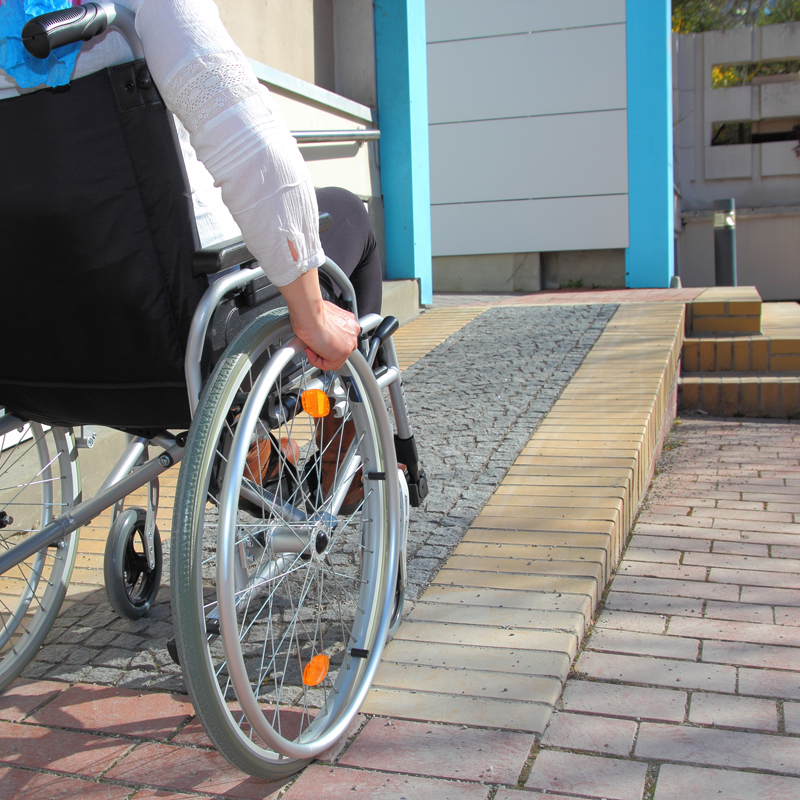Finding work, acquiring transportation to work and orienting to a new workplace are among the challenges that the disabled face in their pursuit of gainful employment. The greatest challenge that the disabled employee faces is the potential disability-related obstacles preventing them from doing the job itself. To complicate this problem, disabled employees do not all possess the exact same skill sets. It becomes evident that some disabled employees need more workplace accommodations than others.
The following are a few examples of workplace accommodations and modifications which will transform an inaccessible workplace into an accessible one.
1. Parking Accommodations
A lot of disabled employees benefit from having parking accommodations that reduces the distance from their car to their workstation. Having an assigned parking space that ensures that a wheelchair-bound employee has adequate access to navigable sidewalks and entryways will uncomplicated a disabled employee’s employment experience.
2. Ramps and Elevators

3. Adaptive Workstations
Adaptive workstations will transform a work environment by providing relatively simple solutions to otherwise complicated disabilities. The flexibility to raise a table to a proper height, for example, makes a workstation able to accommodate more than a single type of disability.
4. Wide Automatic Doors
In the interest of making it possible for the disabled to gain access to a place of employment, wide automatic doors provide significant accommodations to ensure this access. Wider openings allow for people in larger wheelchairs to have the room necessary to clear an entryway. Automatic doors allow for entry without requiring the use of one’s hands to open a door, which addresses a wide range of diverse disabilities with a single accommodation.
5. Creative Training Tactics
One of the most cost effective ways to ensure that a disabled individual will be able to do the job they are hired to do is to utilize creative training tactics. Since a disabled person will approach tasks differently from their non-disabled colleagues, often creative training tactics seek to discover a simple work-around to already established training methods. This approach aims to eliminate common issues a disabled person would face while carrying out their required employment tasks.
6. Adaptive Software
Every day new adaptive software is hitting the market allowing the disabled to operate more independently than in years past. In addition, much of this software has become cheaper to acquire. From programs like JAWS for the visually impaired and blind to Dragon Naturally Speaking for disabled individuals needing speech triggered access to computer operations, such software solutions have significantly provided access to a number of jobs that the disabled were unable to access in years past.
7. Adaptive Hardware
As with adaptive software, adaptive hardware solutions to many disability-related employment issues have also been steadily introduced into the workplace. The blind and visually impaired, for example, use physical braille displays, scanners to access print text from documents and some low vision individuals use CCTV technology to enlarge text to make it possible for them to sight read materials at work. It is important to note that these and other items are considered business expenses and can provide employers with helpful tax deductions.
8. Relocating Workstations
Another often overlooked simple accommodation is to simply relocate a workstation to improve the workplace environment for a disabled employee. For example, someone with a bladder-related issue caused by a disability may experience less of a problem at work if their workstation is relocated closer to bathroom facilities.
9. A Positive Outlook
Perhaps the most overlooked disability-related accommodation that an employer could provide is a positive outlook on the employment situation. It is easy for employers to jump to conclusions why their company should not hire a disabled individual. Unfortunately, it is a failure to want to make accommodations that leads to the greatest obstacle of making the workplace genuinely accessible to disabled employees. An employer needs to understand that the accommodation they provide will change the life of a disabled person, making that person a more productive member of society.
